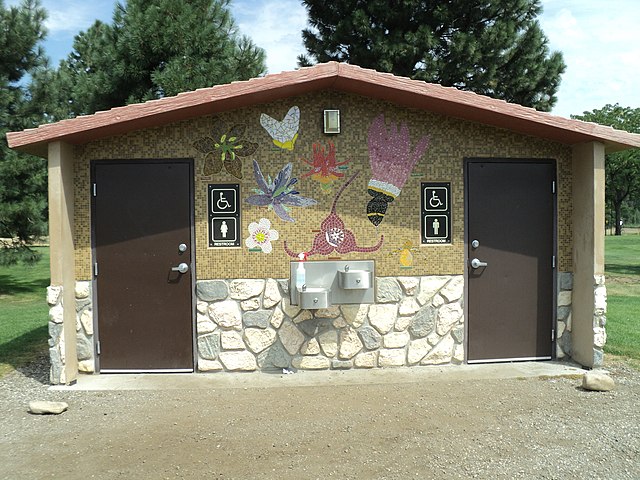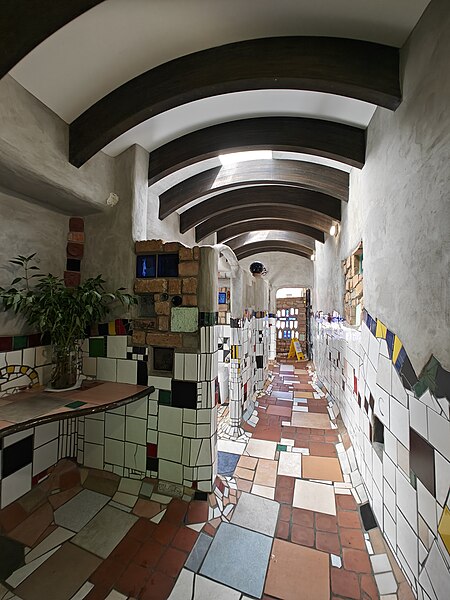The Hundertwasser Toilets is a public toilet located at 60 Gillies Street, the main street of the town of Kawakawa in northern New Zealand. The structure was completed in 1999 and named after the architect and visual artist Friedensreich Hundertwasser, who conceived and designed the project. It is one of the few toilet blocks worldwide seen both as an international work of art and a tourist attraction in its own right.
The back wall of the women's toilets
The view of the public toilets from the curb, 2023. The Hundertwasser koru flag is flying above the building.
The hallway inside the women's toilets
The entryway to the women's stalls
A public toilet, restroom, public bathroom or washroom is a room or small building with toilets and sinks for use by the general public. The facilities are available to customers, travelers, employees of a business, school pupils or prisoners and are commonly separated into male and female toilets, although some are unisex, especially for small or single-occupancy public toilets, public toilets are sometimes accessible to people with disabilities. Depending on the culture, there may be varying degrees of separation between males and females and different levels of privacy. Typically, the entire room, or a stall or cubicle containing a toilet, is lockable. Urinals, if present in a male toilet, are typically mounted on a wall with or without a divider between them. Local authorities or commercial businesses may provide public toilet facilities. Some are unattended while others are staffed by an attendant. In many cultures, it is customary to tip the attendant, especially if they provide a specific service, such as might be the case at upscale nightclubs or restaurants.

A public toilet on the Boise River Greenbelt in Idaho, USA, featuring public art.
A public toilet at a park in Viiskulma, Helsinki, Finland
A "washroom" (public toilet) at York University in Toronto, Ontario
Public pay toilet in Kenya








